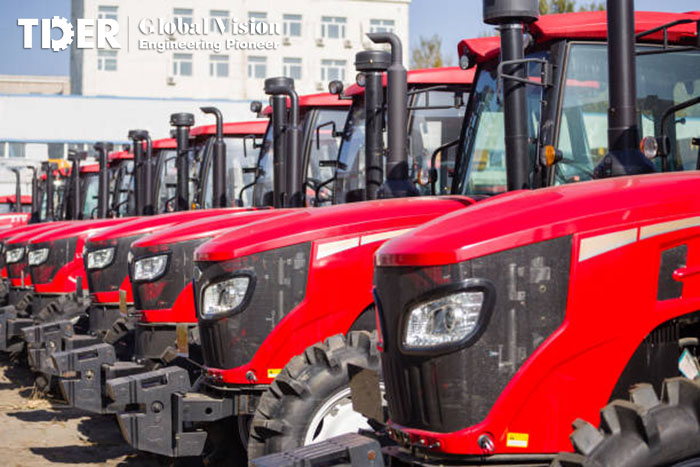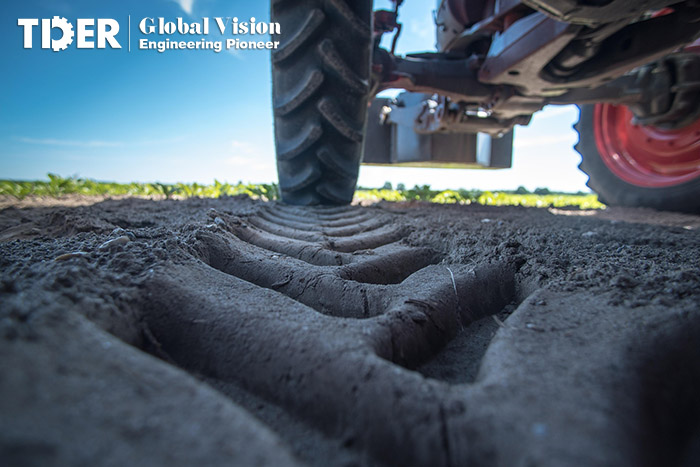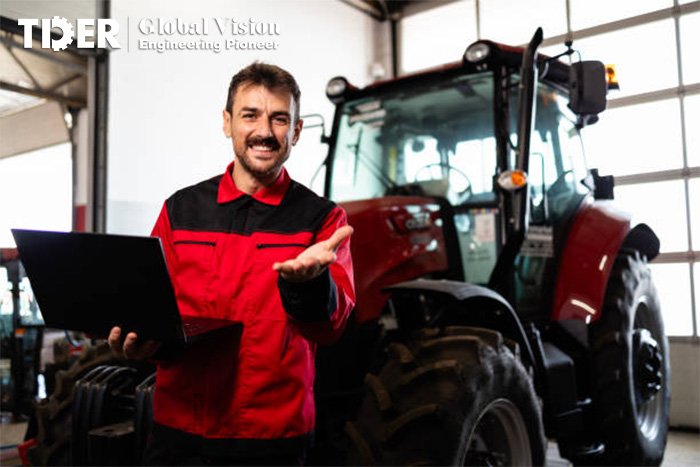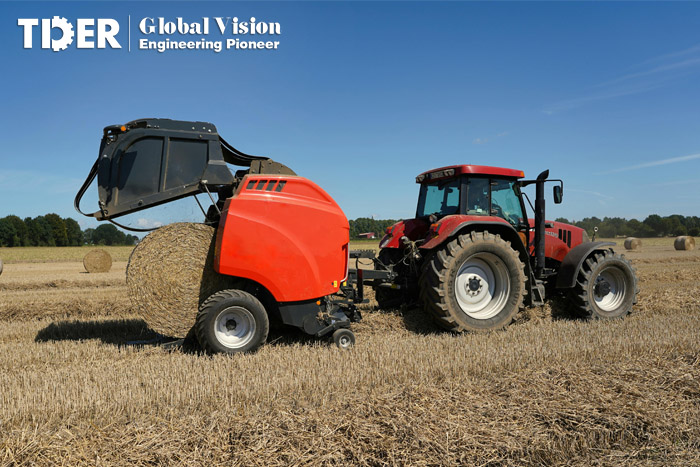Service Hotline:86-0592-5681408 / 86-17346269651
As global agricultural mechanization continues to improve, Chinese-made tractor are gaining greater influence in international markets. For farm tractor end users and dealers around the world, the chassis is not only the skeleton of the machine but also the core structure that determines overall performance, stability and service life. The design, model and configuration of the chassis directly affect the carrying capacity, traction and compatibility with various implements.
In actual procurement, many buyers focus only on engine power or appearance and overlook important chassis parameters. An incorrect chassis choice may cause the whole machine to underperform, reduce work efficiency or even shorten long-term durability. By understanding tractor chassis models from China and technical characteristics in depth, overseas users can make more scientific and rational decisions during selection, ensuring that the wheel tractor they buy can adapt to different field environments, work requirements and subsequent maintenance needs.

In this article, TDER will comprehensively analyze tractor chassis from China from the perspectives of structural design, drive type, suspension system and implement adaptation, helping global customers quickly grasp key knowledge and providing reliable references for procurement and use.
I. How Important Is the Chassis?
The chassis model of a farm tractor is an important indicator for measuring the structural characteristics and performance of the whole machine. Manufacturers usually classify chassis based on wheelbase, wheel track, axle strength, transmission design and implement adaptability to meet different operating needs. Common chassis models in the tractor market in China include TY, TE, TB, TD, TF, TG and TC; these design platforms correspond to different power ranges and working capabilities.
The chassis plays a crucial core role in the machine. It not only carries the weight of the engine, gearbox, axles and various implements, ensuring operational safety and stability, but also efficiently transmits engine output to the drive system for smooth and reliable traction and working efficiency. The design of the chassis directly determines how well the tractor matches with different implements, including weight, size and efficiency. Therefore, a reasonably designed chassis with high load-bearing performance is key to reliability, operational adaptability and long-term economic benefits. Overseas procurement experts note that under high-load working conditions, insufficient chassis bearing capacity may cause axle fatigue, deformation or even breakage, affecting the service life of the whole machine and increasing maintenance costs.

II. Common Types of Tractor Chassis in China
According to industry surveys and manufacturer data, the main chassis models and their key parameters in the tractor market in China are as follows:
Chassis model | Compatible horsepower range | Main features | Typical application scenarios |
TY | 30–45 hp (22–33 kW) | Small chassis, lightweight design, small turning radius | Orchards, greenhouse operations, small farmland plots |
TE | 50 hp (37 kW) | Medium-sized chassis, combining flexibility and stability | Hilly terrain, cash crop cultivation |
TB | 70–80 hp (52–60 kW) | Medium chassis, good load capacity | Medium-sized farmland, agricultural machinery cooperatives |
TD | 85–140 hp (63–104 kW) | Medium-large chassis, high stability and durability | Large-scale farming, pastures, deep loosening operations |
TF | 150–180 hp (112–134 kW) | Large chassis, suitable for heavy-duty operations | Large-scale grain fields, deep plowing, heavy rotary tilling |
TG | 125 hp + (93 kW+) | High-end bridge chassis, outstanding heavy-duty capacity | Large-scale agriculture, joint farm operations |
TC | 120–160 hp (90–120 kW) | Medium-high horsepower chassis, strong versatility | Grain fields, pastures, and engineering operations |
Industry analysis believes that TY and TE chassis are more suitable for light-load or flexible operations, making them convenient for small fields or complex terrain; TB and TD chassis belong to general-purpose designs that can meet most operational needs; and TF, TG and TC chassis are mainly aimed at large-scale, high-intensity work scenarios and are suitable for heavy loads and long working hours. Buyers should combine their terrain conditions, operation scale and the type and weight of matching implements when selecting, so that the chassis delivers optimum performance and efficiency.
III. Differences Between Large and Small Chassis
Even within the same horsepower range, large chassis models and small chassis models differ in design, performance and application scenarios:
• Structure and weight: Large chassis models are typically 300–1000 kg heavier than small ones. Their axles and transmission systems are more robust, giving them stronger carrying capacity and impact resistance, so they can better handle heavy loads and long-term continuous operation.
• Wheelbase and track width: A large chassis has a longer wheelbase and wider track, providing greater stability during work and reducing the risk of side tilt. This allows it to carry wider or larger implements and improve efficiency per pass.
• Durability: Large chassis generally use high-strength alloy steel and thickened structural parts, effectively slowing fatigue damage. Under high-load, high-intensity conditions they maintain a longer service life and lower life-cycle maintenance costs.
• Flexibility: Although small chassis models have limited carrying capacity, they are more maneuverable in narrow plots, greenhouses, orchards and complex terrain, making them suitable for tasks requiring frequent turns or precision operations.
TDER technical experts recommend that overseas buyers should comprehensively consider terrain, workload, type of implement and expected maintenance cost when selecting a chassis. For large-field cultivation, deep tillage and heavy-duty tasks, it is better to choose a large chassis; for light-duty operations, small areas or protected agriculture, a small chassis can maintain efficiency while offering higher flexibility and economy.

IV. International Procurement Considerations and Risk Prevention
With cross-border transactions in agricultural machinery increasing, overseas buyers of Chinese tractor chassis need to pay special attention to chassis models, certification standards, specification matching and after-sales assurance. The following suggestions help buyers mitigate risks and improve returns.
1. Verify the chassis model:
Always verify that the model and technical parameters on the nameplate, manufacturer certificate, technical manual and contract are consistent. The nameplate usually indicates the model, production batch, date and manufacturer—your first step in confirming equipment identity. Some non-standard suppliers may use a similar model to substitute for a genuine one, leading to mismatched implements or insufficient load capacity. For example, substituting a TE chassis for a TY may look similar but has different axle strength and wheelbase, posing a risk of axle failure during prolonged heavy work.
2. Certification and regulatory compliance:
Different export markets have varying certification requirements. The EU requires a CE mark and relevant machinery directives, while the U.S. requires compliance with EPA Tier emission standards. Some Middle Eastern and South American countries also have localized safety and emission rules.
3. Match specifications and operating needs:
Before purchasing, clarify horsepower range, wheelbase, axle load and hitch specifications based on terrain slope, soil type, implement types and work intensity. The chassis’s load capacity and drive matching directly determine reliability under heavy loads. In high-load open-field operations, choose a large chassis and high-torque engine for stability and continuous output; in greenhouses or orchards, choose a compact wheel tractor with high maneuverability.

4. Parts supply and after-sales service:
A good after-sales system includes quick parts supply, training, remote diagnostics and on-site maintenance. Buyers should confirm parts inventory cycles (such as axles, drive shafts and hydraulic pumps) and sign a clear service agreement.
5. Prevent false labeling and substitute parts:
Some manufacturers may exaggerate horsepower, load capacity or use non-OEM substitutes to reduce costs, which directly affects performance and life. Request third-party test reports or actual measurements and choose brands with long export experience. In some low-price bids, suppliers may assemble the chassis with refurbished or inferior parts, which may fail after a few months.
Cross-border procurement of tractor chassis involves model selection, specification matching, regulatory certification, parts supply and after-sales service. A scientific, comprehensive purchase decision not only ensures performance and efficiency but also reduces maintenance costs and extends service life. When choosing a supplier, professionalism and reliability are equally critical.
For overseas buyers looking for a professional Chinese tractor manufacturer and exporter, TDER is a trustworthy partner. TDER provides high-quality products along with a comprehensive after-sales service system and technical support team. With extensive export experience, its products have been sold to 158 countries and regions and are widely trusted. Whether you are making an actual purchase or seeking technical consultation, feel free to contact us for reliable procurement assurance and all-round support.